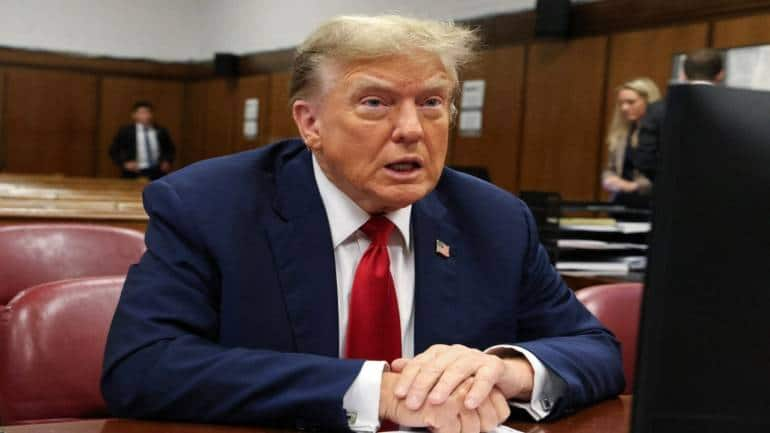
Both BSE MidCap and SmallCap indices gained 6 percent and 7 percent since March 20.
Following a sharp decline since mid-March, the BSE MidCap index traded in the green for the fourth straight session, while the SmallCap index accelerated for the sixth sessions in a row on April 1. While investors hope that this signals an end to the correction, analysts stay mixed in their views.
Both BSE MidCap and SmallCap indices gained 6 percent and 7 percent since March 20. On April 1, BSE MidCap was up 1.6 percent or 646 points, while BSE SmallCap gained 2.98 percent or 1288 points.
The latest rally in the market is led by blue-chip stocks, but some wealthy investors are cautious due to their high valuations. Mutual funds and PMS fund managers, however, face pressure to deploy funds, despite the expensive valuations. They may lean towards largecaps to mitigate volatility, although this trend could further inflate valuations in that segment, analysts said.
"I remain cautiously optimistic about mid and small-cap stocks in the near term. Overall, I anticipate a focus on individual stock movements," Kranthi Bathini, director of Equity Strategy at WealthMills Securities, said.
Bathini notes a strong positive trend in the benchmark indices with the Sensex and the Nifty reclaiming the 74,000 and 22,000 levels. This has led to a rebound in mid and small-cap stocks on the back of ample liquidity. Given the high-beta nature of mid and small-caps, analysts anticipate a shift towards stock-specific movements. Earnings performance for the fourth quarter is expected to be the market driver after the upcoming general elections. Companies with strong earnings visibility are likely to sustain the rally, while others may face challenges.
Independent analyst Ambreesh Baligha said that it's premature to conclude whether the correction in midcap and smallcap stocks has ended. Despite the steep plunge, investors view it as a discount sale and have begun buying, leading to the recent uptick in midcap and smallcap indices. However, Baligha notes that valuations remain high, suggesting the possibility of further correction after the recent rebound.
The BSE MidCap index has a one-year forward PE ratio of 24.56x, slightly below its 10-year average of 24.61x. Meanwhile, the BSE SmallCap index is trading at 23.8x, compared to its 10-year average PE of 21.55x.
From the start of February till middle of March, both the MidCap and SmallCap indices lost around 2.2 percent and 9 percent, while the benchmark Sensex and Nifty gained around 0.7 percent each.
Varun Lohchab, head of institutional research at HDFC Securities, believes there's still froth in broader markets to be cleared. He notes that while midcaps are moderately overvalued, certain segments of the smallcap universe are trading well above their fundamentals. According to their recent report, Nifty Midcap 100 and Nifty Smallcap 100 indices are trading at 120 percent and 144 percent of their respective historical valuations. Therefore, another correction wave to bring smallcaps to a more reasonable level wouldn't be a surprise.
Lakshmi Iyer, CEO of Kotak Alternate Asset Manager, in a recent interview with Moneycontrol cautioned against heavy investment in smallcap stocks due to their stretched valuations. She suggested reducing smallcap allocation and increasing largecap holdings instead.
Jefferies India in its latest note said it sees the recent correction in midcaps and smallcaps as just that—a correction, and not a meltdown. Unlike the drastic 45 percent slump in the SmallCap index in 2018, this correction is viewed as healthy. Despite possible further corrections due to increased small and mid-cap volumes and mutual fund flows, the foreign brokerage remains optimistic, particularly on property developers, industrial and power companies, and select PSUs.
While the broader markets have seen a downturn lately, this isn't a 2018 repeat, attributed then to the NBFC crisis and capital gains tax. Jefferies notes that macroeconomic fundamentals in India are strong. Although small and mid-cap fund flows are moderating, market volume remains high, indicating potential for further correction, Jefferies India said.
Some analysts, preferring anonymity, attributed the recovery to government intervention following recent actions by the RBI and Sebi. Reports indicate that the finance ministry opposes significant regulatory interventions in the stock market, fearing they could cause nervousness among participants. Analysts suggest the government disapproved of the Sebi and RBI actions before the elections and aims to avoid further complications. Consequently, many analysts believe the market will remain stable until the elections.

 1 month ago
1 month ago














